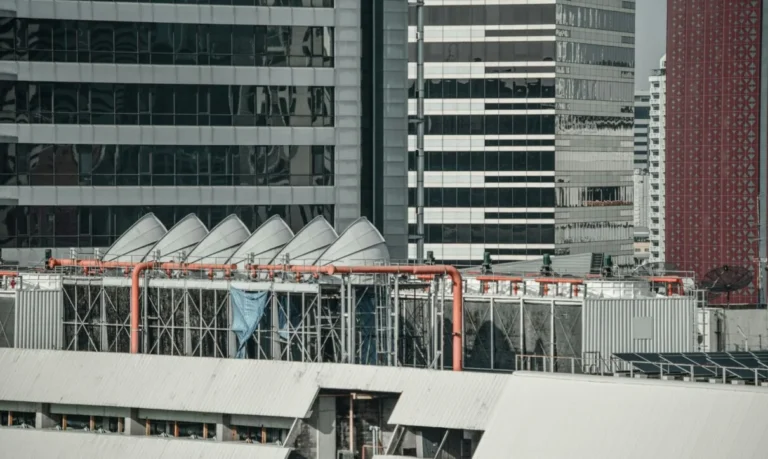Controlling Costs When Using External Vendors
Outsourcing any service such as janitorial, landscaping, or maintenance helps facility managers increase their labor pool resources and expertise. But it also introduces financial risks if expenses aren’t managed correctly. Without proper cost controls, third-party vendors can lead to budget overruns eating into facility profits and eventually issues for the property manager.
Common contributors to cost overruns include:
- Scope increases due to disparate understandings
- Unexpected charges not defined upfront
- Poor monitoring and reconciliation processes
- Lack of incentives for vendor cost containment
Facility managers can mitigate these risks by:
- Establishing transparent pricing in contracts
- Monitoring budgets actively
- Creating open-book accounting
- Using cost-savings-based incentives
Defining Contract Pricing
The first strategy for cost control is upfront pricing transparency. Contracts should fully define at least these items:
Base Services – Detail exact work activities included in the base service fee (e.g. daily cleaning, weekly lawn mowing). Specifications eliminate scope ambiguity.
Labor Rates – For any services beyond the base, define labor rates for additional worker hours. RequestRate charts for specialized roles like supervisors or technicians.
Materials Markup – Specify the percentage markup applied to any materials the vendor provides. Additional services often incur materials costs.
Equipment Fees – List rental rates for any specialized equipment needed for add-ons e.g. carpet cleaners.
Travel Fees – Establish a rate for vehicle mileage if travel is required between sites as well as items such as parking if in a large metropolitan city.
Emergency Response – Price emergency repairs, unplanned visits, or after-hours response. These can add up without pre-set rates.
Cancellation Terms – Detail fees if the facility manager must cancel or postpone scheduled vendor work. Avoid surprise charges.
Volume Discounts – Specify pricing discounts for purchasing high volumes of time or materials. Discounts provide cost incentives.
Including every potential supplemental fee in the contract reduces invoice surprises and disputes down the road. The table below summarizes key pricing elements to define:
| Cost Category | Details to Specify |
|---|---|
| Base Services | Exact work scope included |
| Labor Rates | Hourly/daily for various roles |
| Materials Markup | Percentage over vendor cost |
| Equipment Fees | Rental rates for add-ons |
| Travel Fees | Per-mile rate for travel and Parking |
| Emergency Response | After-hours/unplanned rates |
| Cancellation Terms | Fees if work cancelled or postponed |
| Volume Discounts | Price incentives for high volumes |
Monitoring Spend Against Budget
After a baseline for contract pricing is established, facility managers need to regularly monitor the actual spending. This includes constantly reviewing vendor invoices in detail for every billing cycle. It also means comparing line item charges against the contracted rates and identifying any discrepancies for the vendor to correct.
For services billed based on hourly work, it’s critical to have reviewed timesheets to confirm that the hours align with the facility’s record of work completed. This ensures that any additional hours or services were properly authorized and billed correctly. Once again, question any vague invoice line items. As a property or facility manager, you need to understand what it is that you are paying for.
Beyond validating individual charges, track total monthly and year-to-date spending for each vendor against the annual budget. Watch for overages in certain cost categories or overall. Bring all discrepancies to the vendor’s attention promptly and reconcile before paying invoices. Doing diligent spend monitoring reduces inflated billings and prevents budget overruns.
Recommend Creating Open Book Accounting
To facilitate cost oversight, all contractors should maintain open book accounting on facilities they service. This means that the vendor:
- Provides access to timesheets so the facility manager can confirm billed hours
- Shares quotes received from subcontractors
- Allows audits of inventory/materials records and actual costs
- Justifies markups and benefits managers can expect to gain
With open-book accounting, facility managers gain visibility into the vendor’s true cost structure. It builds trust by removing perceptions of excess profit at the facility’s expense. Also, issues get resolved faster when all cost records are transparent.
Using Cost-Savings Incentives
Lastly, contract terms can incentivize vendors to proactively save costs using strategies such as the following:
Cost-savings targets – Establish annual cost-savings goals that both parties agree are achievable without sacrificing quality.
Shared savings – Allow the vendor to keep a percentage of any savings they achieve below budget as an incentive.
Multi-service discounts – The more services or materials that are purchased, the lower the overall cost becomes, rewarding efficient servicing.
Renewal incentives – Offer multi-year renewal options if vendors meet cost targets during the initial term.
Gainsharing – Have contractors propose cost savings initiatives and share implementation gains.
Awards – Recognize top-performing sites or crews who best manage costs.
Savvy facility managers use incentives to align vendor priorities with cost oversight. This catalyzes vendors’ creativity in managing expenses.
Addressing Budget Busters
Despite best efforts, overruns still occur. Analyze the spending data to understand problem areas such as:
- Consistent overages on certain work types indicating unclear scopes
- Unexpected add-ons billed without proper authorizations
- Unmonitored small expenses accumulating over time
- Inefficient work processes driving excessive hours
- Insufficient supervision and quality control leading to waste
Discuss these high cost areas with vendors to identify root causes and solutions, like:
- Clarifying scopes that frequently go over-budget
- Tightening change order approval processes
- Training workers on executing tasks efficiently
- Adding supervisory oversight to ensure rework avoidance
Take prompt corrective action before small cost leaks turn into major budget busters.
Signs Your Costs Are Out of Control
In today’s economic climate, property managers are seeing vendor costs slowly getting out of control. From logistics to labor, building managers are slowly getting squeezed by increasing vendor costs. Supplies and work from third-party contractors are also seeing substantial price hikes that are shrinking profit margins. Even fundamental business services such as janitorial, security, and maintenance have risen substantially as vendors slowly pass their higher labor and operations costs onto customers. Without a comprehensive vendor cost management strategy, property managers risk letting these increases accumulate and damage the bottom line. If vendor costs are not controlled, they threaten to destabilize building budgets. Here are some symptoms that most likely signal that your vendor invoices need scrutiny:
- Surprise charges appearing frequently on invoices
- Routine or preventative work billed as unplanned “emergency” visits
- Vendors proposing unexpected price increases
- Creeping cost growth over time without changes in scope
- Vendors resisting pricing transparency
Chronic cost overruns signal it may be time for contract renegotiation or exploring competitor options. Cost escalations above inflation warrant close scrutiny.
Key Cost Oversight Strategies
Managing third-party vendor relationships presents financial hazards, but diligent facility managers can mitigate risks through:
- Detailed contracts defining all potential fees
- Close invoice review and budget tracking
- Open accounting giving cost transparency
- Incentives to reward vendor cost efficiency
With the right oversight strategies, outsourcing enables facility management teams to operate infrastructure effectively without busting budgets. The path to cost control begins with clearly defined expectations, active monitoring, transparent accounting, and shared rewards in achieving savings.
Getting Vendor Cost Reduction Ideas
Beyond managing their own expenses, facility managers can engage vendors in generating cost-saving ideas through:
Joint brainstorming sessions – Schedule workshops specifically for vendors to share cost-reduction proposals. Come prepared with data on budget pain points.
RFP innovation incentives – When re-bidding contracts, ask bidders to include a cost-savings proposal in their RFP response. Reward innovative thinking.
Staff engagement – Encourage vendors to survey their own staff on efficiency improvements and cost reduction possibilities. Frontline insights are invaluable.
New technology pilots – Allow vendors to pilot new technologies that could reduce costs. Offer to fund a portion of pilots with verified ROI.
Best practice sharing – Facilitate forums for vendors to share successes and cost-saving approaches from other client sites that could apply broadly.
Vendor roundtables – Host informal roundtables for peer vendors, like landscapers and cleaners, to exchange cost-saving ideas across services.
Automation assessments – Ask vendors to identify manual tasks that could be automated or optimized with technology to reduce labor costs.
Tapping into vendors’ perspective reveals cost-cutting opportunities facility managers may overlook. Their ideas combined with managers’ data-driven analysis lead to impactful programs for sustained savings.
Evaluating Cost Reduction Ideas
While encouraging creativity from vendors, facility managers must also carefully evaluate proposals to ensure they deliver true savings without compromising other metrics like service quality or safety.
Use criteria like:
- Impact: Does the projected cost reduction justify investment required? What is the ROI?
- Evidence: Has this approach demonstrably saved costs for other clients?
- Ease: How complex would implementation be? Would it slow normal operations?
- Quality: Would the change maintain service levels or negatively impact outcomes?
- Risk: Does the change introduce any safety, compliance or liability risks?
- Sustainability: Will savings continue over time or only provide one-time gains?
Discuss evaluations transparently with vendors and allow time for reworking proposals that don’t initially meet targets. The right solutions generate lasting win-win savings for both parties.
Key Takeaways
The keys to maximizing cost savings from third-party vendors include:
- Engaging vendors directly in brainstorming cost reduction opportunities
- Evaluating proposals for true impact and sustainability
- Willingness to pilot new ideas with strong ROI potential
- Transparently discussing evaluations to improve proposals
- Selecting changes that reduce costs without sacrificing quality or compliance
Savvy facility managers turn vendors into partners in the mission to contain costs while delivering excellent service quality.








